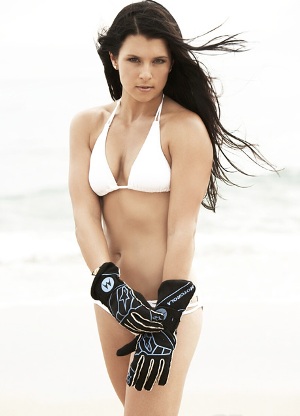 As Ernest Hemingway once said, “Auto racing, bull fighting and mountain climbing are the only real sports . . . all others are games.” Americans have always loved speed, and as a whole the racing and motorsports industries in the US have been thriving. Sponsorship spending alone on motorsports in North America went over $3 billion in 2007 and continues to grow.
As Ernest Hemingway once said, “Auto racing, bull fighting and mountain climbing are the only real sports . . . all others are games.” Americans have always loved speed, and as a whole the racing and motorsports industries in the US have been thriving. Sponsorship spending alone on motorsports in North America went over $3 billion in 2007 and continues to grow.
While NASCAR has led the way in US motorsports over the last decade or two, open wheel racing has always maintained a passionate following. The Indianapolis 500, the highlight of the Indy Racing League (IRL) season, is still the highest attended single day sporting event in the world, and open wheel racing has a long history and tradition in the US. Additionally, outside of North America, open wheel racing and the Formula One circuit dominate the racing arena with over 50 million live television viewers worldwide for every race.
As the IRL season officially came to a close last week with the league’s Championship Celebration in Las Vegas, league officials were already preparing for the 2009 season. And the league looks poised to make a jump forward on the racing scene. The emergence of star driver Danica Patrick has brought substantial media coverage to IRL events and IRL viewer ratings were up in 2008. The league has forged several significant new sponsorship relationships with Coca-Cola and Philips-Van Heusen (PVH)-the PVH IZOD brand has been named the official apparel line for the IRL. IRL Vice President of Sales, Greg Gruning, suggested that sponsorship relationships like these are “what is going to generate our sport to another level.”
Additionally, the league has executed a new television rights contract with the upstart Versus network. While some critics have suggested that this move will diminish the overall exposure for the IRL by taking races off of the more publicly recognized ESPN network, proponents of the deal contend that ESPN coverage was often relegated to the networks secondary channels and provided very little in the way of IRL specialized coverage. The Versus network, on the other hand, has agreed to provide substantial pre and post race coverage as well as a number of hours of specialized IRL coverage devoted to the drivers and the sport of open wheel racing. Jamie Davis, the new Versus president, has pledged to showcase the IRL on the network, to attract a younger demographic and to help the IRL grow. All promising indicators for open wheel racing.
Combine that with the merger between the IRL and the Champ Car circuit along with the IRL’s increased funding of its steppingstone Indy Lights series, and one can see increased growth on the horizon. As economic times look bleak, and some pundits are predicting challenging times for NASCAR ahead, the IRL, while not immune to the effects of the economic downturn, looks to be in a position to gain ground in the racing arena.
And finally, the IRL has one additional advantage in the fight for racing dominance-speed. The cars are just faster and more technically sophisticated. At top speeds of over 230 mph, open wheel racing arguably provides a product that is more exhilarating, more technically demanding and more cerebrally challenging than stock car racing. While no one is arguing that the IRL is going to supplant NASCAR as America’s racing darling anytime soon, the future looks bright for open wheel racing and its proponents.
Guest contribution by Michael C. Frilling, Esq.; General Counsel; www.fksportsmanagement.com